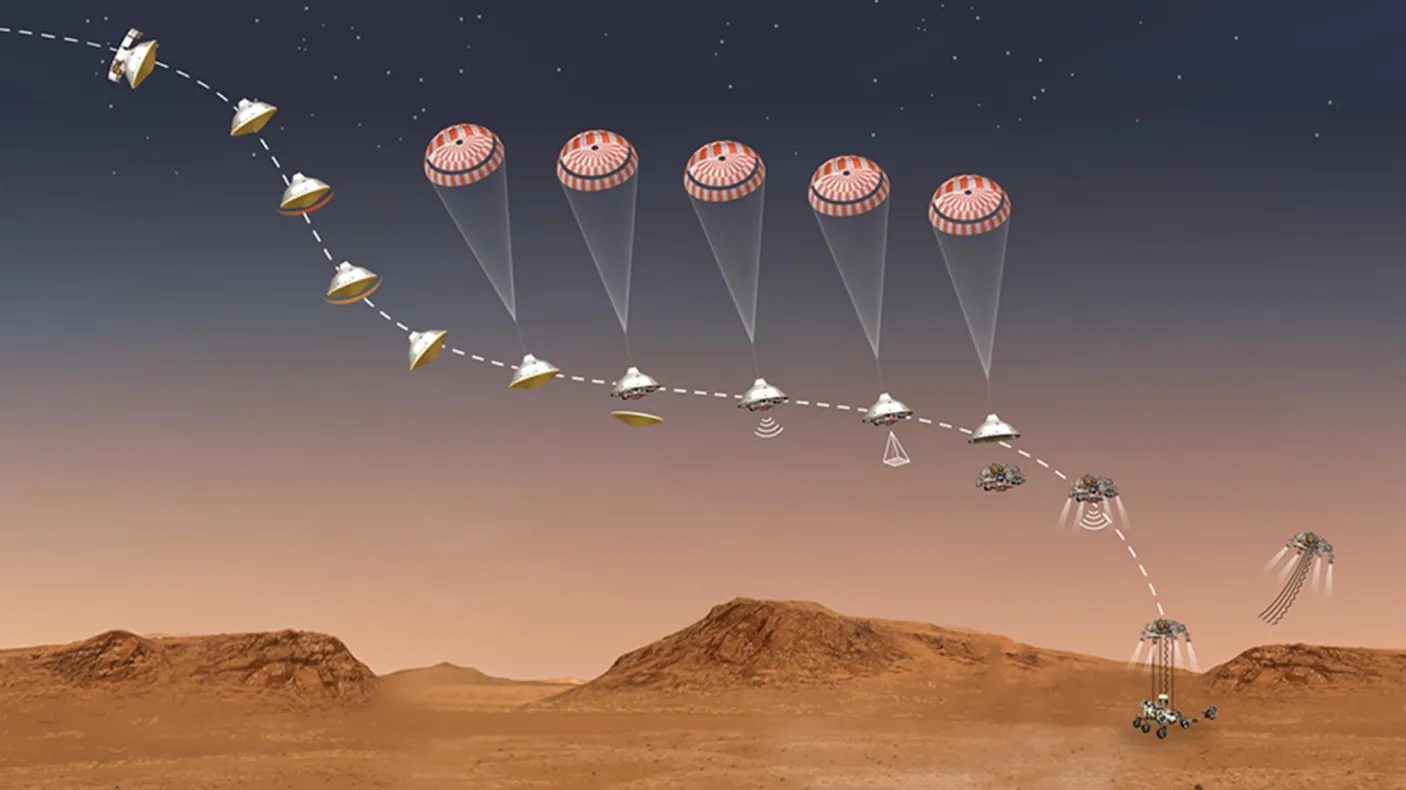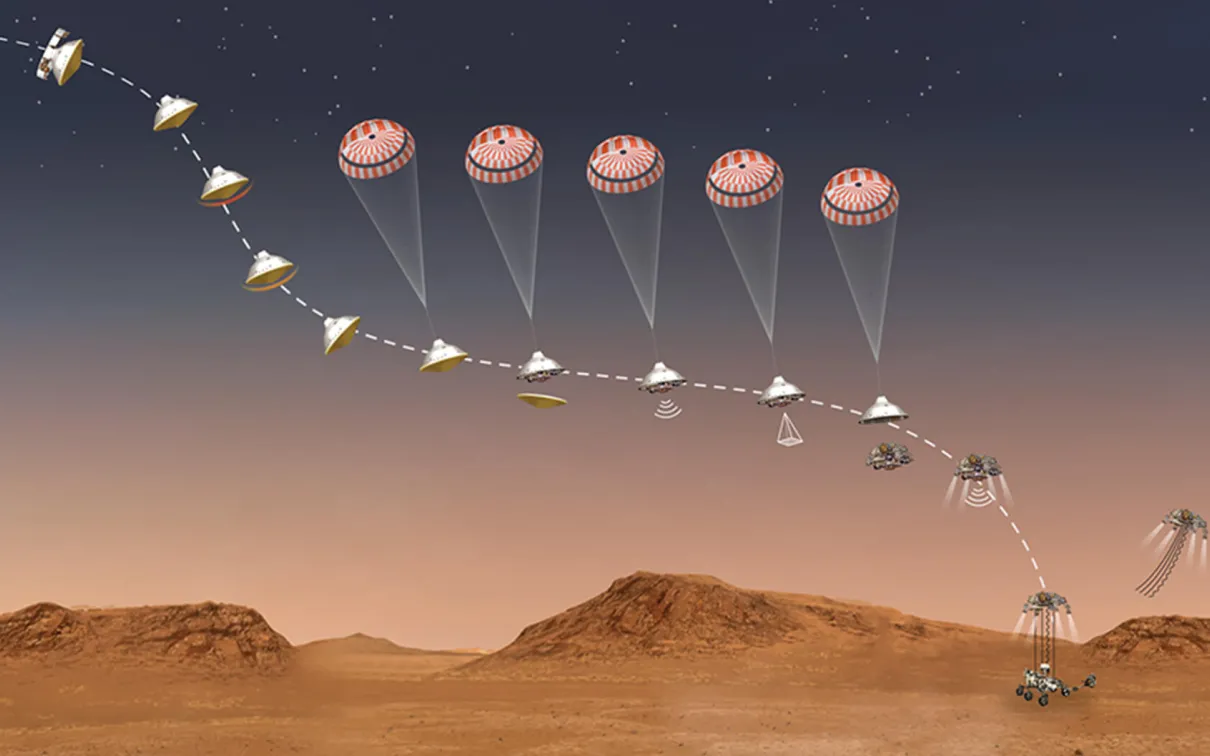Mission to Mars
The Mars Perseverance Rover will give us the most complete picture of the Red Planet to date as we consider the big question—was there ever life on Mars?
Published
Category
Author
On February 18, 2021
On February 18, 2021, at approximately 3:55pm EST, the Mars Perseverance Rover will touch down on the surface of Mars. When it reaches Mars, Perseverance will have traveled 470.8 million kilometres on its journey from Earth.
The SUV-sized Rover, which weighs more than a metric ton, will plunge through the thin Martian atmosphere at a speed over 20,000 km/h, then a parachute will slow it down so that it can land safely on the surface.
The one-way time it takes for radio signals to travel from Earth to Mars is about 10.5 minutes, so Perseverance is designed to complete the hundreds of steps of entry, descent and landing all autonomously. The mission team on Earth will anxiously wait to hear the first signals from the Rover after its already landed, now known as the “7 minutes of terror” that it takes to perform all these steps.
The Rover is set to land at Jezero Crater, a large impact crater about 45 kilometres wide, just north of the Martian equator. This crater once contained a lake, which could be a good place to find evidence of ancient microbial life. On the Rover, there is a series of instruments that can look for clues to answer the main question: Was there ever ancient life on Mars?
What is unique about this mission is the ability for the Rover to collect and store the most compelling rock and soil samples in sample tubes that will be cached on the surface. These sample tubes will be returned to Earth by a future mission in the 2030s.
Dr. Kim Tait, Teck Chair of Mineralogy at the Royal Ontario Museum (ROM), has been part of the Mars Sample Return Science Program Group (MSPG) and is co-lead of the MSPG-2 Curation Focus Group. Her role is to prepare for these Martian samples to return to Earth and come up with the storage requirements and sample handling methods that will be required for some of the most precious materials ever brought to Earth.
As samples returned from Mars will be stored a Biosafety Level-4, or under the strictest of biohazard requirements known until deemed safe for release, ample planning of their return needs to happen years in advance. One of the ROM’s Earth and Space section’s curation focus areas is Martian meteorites and research goals of Dr. Tait’s group.
Explore More
NASA is about to land on Mars, and these Canadians are part of the mission (CTV)
While hundreds of people from around the world are involved in making the mission a success, several Canadians are making key contributions to the project now, and more will be in the future.
Entry, Descent and Landing (NASA Mars)
Entry, Descent, and Landing – often referred to as “EDL” — is the shortest and most intense phase of the Mars 2020 mission.


